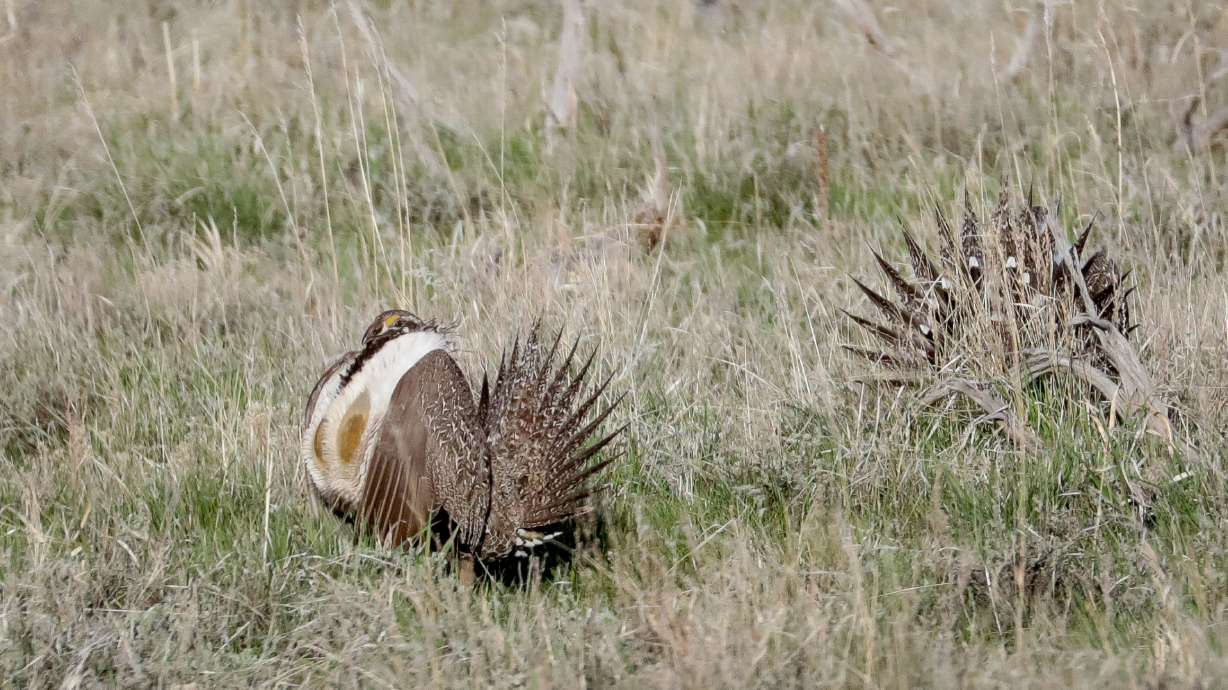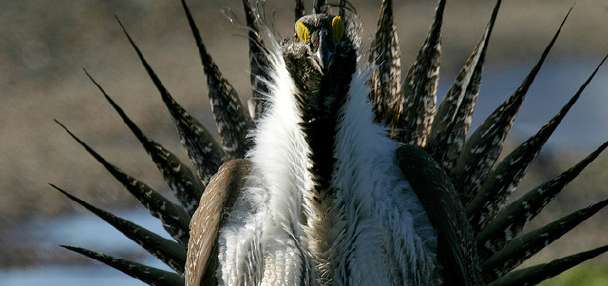Estimated read time: 3-4 minutes
This archived news story is available only for your personal, non-commercial use. Information in the story may be outdated or superseded by additional information. Reading or replaying the story in its archived form does not constitute a republication of the story.
SALT LAKE CITY — Utah Sens. Mitt Romney and Mike Lee co-signed a letter to Senate leaders Tuesday urging them to continue a 2015 agreement that keeps the greater sage grouse off the endangered species list, arguing that state plans to manage the bird species are more helpful than federal protections.
Five other Republican senators joined Romney and Lee in signing the letter, which was addressed to Sens. Chuck Schumer, D-New York, and Mitch McConnell, R-Kentucky, the Senate's respective majority and minority leaders.
In it, the senators reference a 2015 agreement that prohibits the greater sage grouse — a species found in parts of Utah and 10 other U.S. states — from being listed under the Endangered Species Act. Romney's office explains that the decision allows for state conservation efforts to proceed without being interrupted by "activist litigation."
The group writes that Western states have produced individual rules that U.S. Fish and Wildlife Service officials have determined to be "successful in preventing the need to list the species." They assert that the "constant threat of litigation" can pose a threat to the work that they say began with the Obama administration in 2011.
"Each of the 11 Western states which hold sage grouse habitat have adopted their own collaborative, science-based conservation plans, tailored specifically to address localized landscape needs and recover the species," the letter states, in part. "These plans were made with extensive contributions from diverse stakeholders including scientific experts, conservationists, federal officials and local industry leaders."
They ask for the Endangered Species Act ban to continue, contending that it takes time for species conservation policies to take hold and show results.
The greater sage grouse has been at the center of plenty of debates and lawsuits, especially over the past decade.
The newly signed letter comes as talks about potentially adding some sage grouse segments to the Endangered Species Act intensified again earlier this year. The U.S. Fish and Wildlife Service said in May that it would do a review of how it handles at least the bi-state sage grouse, a species that is considered to be a cousin of the greater sage grouse, according to the Associated Press.
The agency's decision came after federal judges struck down multiple rule changes that were made to ease back on sage grouse protections during the Trump administration. For example, the AP reported in June that a U.S. District Court judge in Idaho had overturned a phosphate mining project in southeastern Idaho because the federal government didn't consider the phosphate mine's impact on the species at the time.
Some conservation groups, such as the Center for Biological Diversity, have blasted the 2015 decision to not federally protect the bird. The group says that it is still fighting to have the species federally protected.
The World Wildlife Foundation, which considers the bird species to be "near threatened," says it has lost about half of its historic habitat range as a result of "oil and gas development, conversion of land for agricultural use, climate change and human development."
The National Audubon Society also describes it as a "priority bird," reporting in 2021 that its population had fallen to between 200,000 and 500,000 in North America, an 80% decline since 1965.









